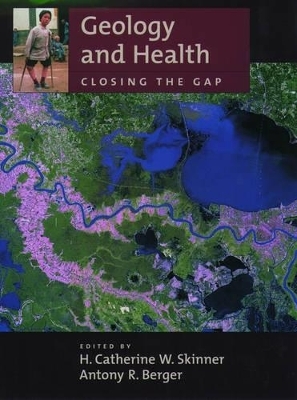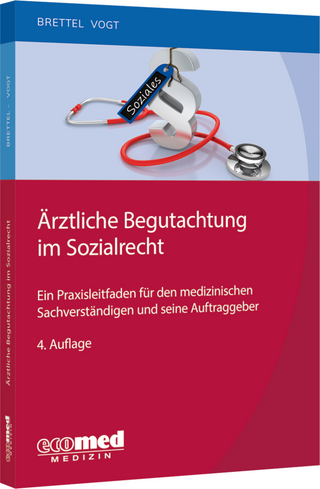
Geology and Health
Oxford University Press (Verlag)
978-0-19-516204-2 (ISBN)
Geology and Health is an integration of papers from geo-bio-chemical scientists on health issues of concern to humankind worldwide, demonstrating how the health and well-being of populations now and in the future can benefit through coordinated scientific efforts. International examples on dusts, coal, arsenic, fluorine, lead, mercury, and water borne chemicals, that lead to health effects are documented and explored. They were selected to illustrate how hazards and potential hazards may be from natural materials and processes and how anthropomorphic changes may have contributed to disease and debilitation instead of solutions.
Introductory essays by the editors highlight some of the progress toward scientific integration that could be applied to other geographic sites and research efforts. A global purview and integration of earth and health sciences expertise could benefit the future of populations from many countries. Effective solutions to combat present and future hazards will arise when the full scope of human interactions with the total environment is appreciated by the wide range of people in positions to make important and probably expensive decisions. A case to illustrate the point of necessary crossover between Geology and Health was the drilling of shallow tube wells in Bangladesh to provide non-contaminated ground water. This "good" solution unfortunately mobilized arsenic from rocks into the aquifer and created an unforeseen or 'silent' hazard: arsenic.
Geologists produce maps of earth materials and are concerned with natural processes in the environment with long time-frame horizons. The health effects encountered through changing the water source might have been avoided if the hydrological characteristics of the Bangladesh delta had been known and any chemical hazards had been investigated and documented. A recurrence of this type of oversight should be avoidable when responsible parties, often government officials, appreciate the necessity of such integrated efforts. The book extols the virtues of cooperation between the earth, life and health sciences, as the most practical approach to better public health worldwide.
List of Contributors
Introduction
Part I: Natural Geologic Hazards
1: Antony R. Berger: Linking Health To Geology
A. Physical--Obvious and Immediate
Commentary
2: Edward Derbyshire: Natural Dust and Pneumoconiosis in High Asia
3: John Grattan et al.: Human Sickness and Mortality Rates in Relation to the Distant Eruption of Volcanic Gases: Rural England and the 1783 Eruption of the Laki Fissure, Iceland
B. Chemical--"Silent" and Long Term
Commentary
4: Peter W. Abrahams: Human Geophagy: a Review of Its Distribution, Causes, and Implications
5: R. Naidu and P. R. Nadebaum: Geogenic Arsenic and Associated Toxicity Problems in the Groundwater-Soil-Plant-Animal-Human Continuum
6: Geological Epidemiology: Coal Combustion in China Robert B. Finkelman et al.
7: Wang Wuyi et al.: Mitigation of Endemic Arsenocosis with Selenium: an Example from China
8: Eiliv Steinnes: Biogeochemical Cycling of Iodine and Selenium and Potential Geomedical Relevance
9: Fiona M. Fordyce et al.: Environmental Iodine in Iodine Deficiency Disorders, with a Sri Lankan Example
10: U. Lindh et al.: Mercury, a Toxic Metal, and Dental Amalgam Removal
11: A. Lindvall et al.: Nuclear Accumulation of Mercury in Neutrophil Granulocytes Associated with Exposure from Dental Amalgam
12: L. P. Gough, J. G. Crock, and W. C. Day: Cadmium Accumulation in Browse Vegetation, Alaska--Implications for Animal Health
13: Adrian Frank: Molybdenosis Leading to Type 2 Diabetes Mellitus in Swedish Moose
Part II: Anthropogenic Changes to the Geologic Environment
Commentary
14: Colin Neal: Surface and Groundwater Quality and Health, with a Focus on the United Kingdom
15: Jane A. Plant and Devra L. Davis: Breast and Prostate Cancer: Sources and Pathways of Endocrine-disrupting Chemicals
16: John Grattan et al.: A Legacy of Empires? An Exploration of the Environmental and Medical Consequences of Metal Production in Wadi Faynan, Jordan
17: Eleanora I. Robbins and Michalann Harthill: Life in a Copper Province
18: Gunnar Hillerdal: Health Problems Related to Environmental Fibrous Minerals
19: H. W. Mielke et al.: Anthropogenic Distribution of Lead
Part III. Identifying the Hazards
Commentary
20: Jane A. Plant et al.: Environmental Geochemistry on a Global Scale
21: O. Selinus: Biogeochemical Monitoring in Medical Geology
22: T. C. Davies: Some Environmental Problems of Geomedical Relevance in East and Southern Africa
23: H. Catherine W. Skinner: Geochemistry and Vertebrate Bones
24: Portia O. Ceruti, Martin Fey, and Justin Pooley: Soil Nutrient Deficiencies in an Area of Endemic Osteoarthritis (Mseleni Joint Disease) and Dwarfism in Maputoland, South Africa
25: Maciej Pawlikowski: Minerals in Human Blood Vessels and Their Dissolution in Vitro
26: Calin A. Tatu et al.: Organic Compounds Derived from Pliocene Lignite and the Etiology of Balkan Endemic Nephropathy
Summary
Glossary of Medical Terms
Index
| Erscheint lt. Verlag | 10.4.2003 |
|---|---|
| Zusatzinfo | 9 halftones & 41 line illus |
| Verlagsort | Oxford |
| Sprache | englisch |
| Maße | 279 x 213 mm |
| Gewicht | 686 g |
| Themenwelt | Medizin / Pharmazie ► Medizinische Fachgebiete ► Arbeits- / Sozial- / Umweltmedizin |
| Naturwissenschaften ► Biologie | |
| Naturwissenschaften ► Geowissenschaften ► Geologie | |
| Naturwissenschaften ► Geowissenschaften ► Geophysik | |
| ISBN-10 | 0-19-516204-8 / 0195162048 |
| ISBN-13 | 978-0-19-516204-2 / 9780195162042 |
| Zustand | Neuware |
| Haben Sie eine Frage zum Produkt? |
aus dem Bereich


